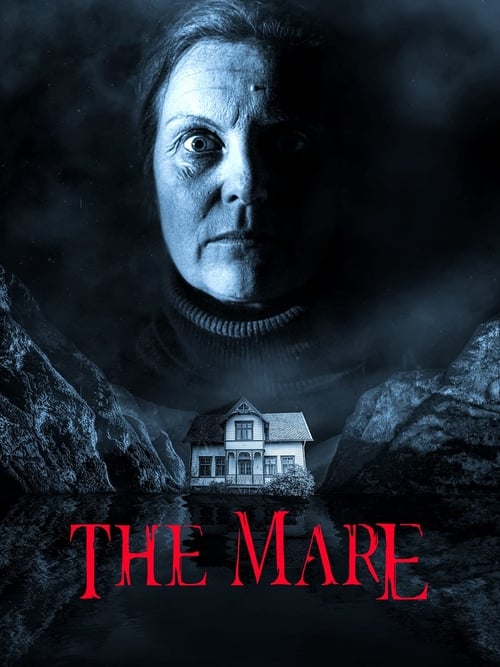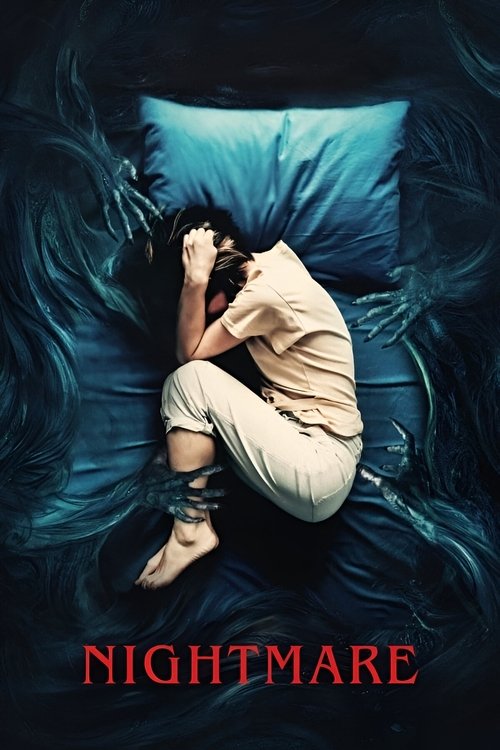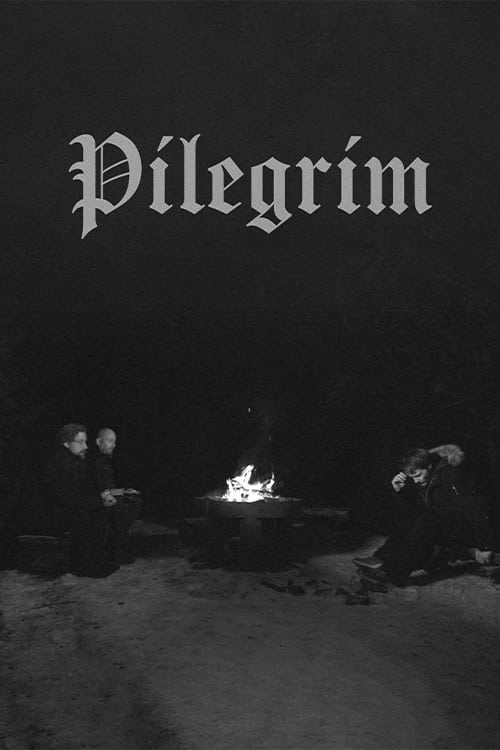
Ask Your Own Question
What is the plot?
In the bleak aftermath of a nuclear disaster, the world is a desolate wasteland where survival is a daily struggle. Food is scarce, hope is fragile, and the shadows of death loom large over the remnants of civilization. Against this grim backdrop, a family of three--Leonora, her husband Jacob, and their young daughter Alice--navigate the ruins of their shattered lives, clinging to each other amid the cold despair. The exact date is never specified, but the atmosphere is thick with the immediate aftermath of catastrophe, the air heavy with radiation and loss.
One day, their fragile existence is interrupted by an unexpected invitation. Mathias, a charismatic and unsettling man, extends an offer that seems too good to be true: a free meal and entertainment at a large, disused luxury hotel. Mathias, dressed impeccably in a black bow tie and dinner jacket, addresses Alice directly with a chilling smile, "May I show you my wonderland?" His words, innocent on the surface, carry an undercurrent of menace that unsettles Jacob and Leonora. Despite their misgivings, the promise of food and warmth is irresistible in a world where both have become luxuries. They decide to accept the invitation, stepping into the unknown with a flicker of hope.
Upon arrival, the family is struck by the stark contrast between the hotel and the outside world. The hotel is cavernous and pristine, its bright halls and lavish dining room a surreal oasis amid the surrounding ruin. Guests mill about wearing gleaming gold masks, their faces hidden, their identities anonymous. Waiters in crisp black and white uniforms serve abundant food, a feast that seems almost obscene given the starvation outside. Leonora whispers, "It's almost too good to be true," her voice tinged with disbelief and cautious hope.
Mathias introduces the evening's event as a "performance," an interactive dinner theater where the guests are both audience and actors. He instructs everyone to don gold masks, explaining that while the performers remain unmasked, the audience's anonymity is part of the experience. "It will be an experience unlike any other," he promises, his eyes gleaming with a strange intensity. The family puts on their masks, and the hotel transforms into a labyrinthine stage where reality and performance blur.
As the evening unfolds, tension mounts. Jacob remains skeptical, voicing his distrust: "I told you something felt off." Leonora tries to hold onto optimism, but even she can't shake the creeping unease. The family soon loses sight of Alice during their exploration, a moment that shatters their fragile composure. Leonora's gaze lingers on a painting of a bloody lamb's head hanging on the wall; to her horror, the lamb's eyes blink. This surreal, nightmarish detail signals the sinister nature lurking beneath the hotel's polished surface.
The atmosphere grows darker as a waiter, his voice trembling, warns the guests, "Trust no one!" Before anyone can react, he slashes his own throat in a shocking act of desperation, blood spilling onto the pristine floor. Panic spreads as the guests realize the performance is not what it seemed. Masks are lost, and the family is mistaken for actors, herded toward the ballroom where the lines between spectator and spectacle dissolve.
In the shadows beneath the hotel, the horrifying truth is revealed. The hotel is a façade for a cannibalistic operation. The guests are not mere spectators but victims, lured to their deaths to supply the food served at the dinner. Workers wheel barrows loaded with clothes to be burned, erasing evidence of the victims. The kitchen and butchery below are grim chambers of death where human flesh is processed into meals. The gold masks symbolize the guests' passive complicity, their anonymity enabling the monstrous spectacle.
Jacob's worst fears come true when he confronts the brutal reality. In a desperate attempt to save Leonora, he attacks one of the butchers in the tunnels. The struggle is fierce and brutal; Jacob is stabbed to death, his sacrifice a tragic testament to his love and desperation. Leonora is captured and offered a choice by Mathias and, shockingly, by Jacob himself, who appears to have joined Mathias's group while she was unconscious. Jacob pleads with her to join them, but Leonora refuses, her resolve steel-hard despite the horror surrounding her.
Escaping the tunnels, Leonora confronts Mathias in front of a new audience, all adorned in their gold masks, ready for the "performance." Her warnings fall on deaf ears; the crowd assumes her revelations are part of the act. Drawing on her past as an actress, Leonora improvises a dramatic speech about finding her daughter, captivating the crowd with her intensity. "I'm not acting," she insists, her voice breaking with raw emotion. The audience, caught in the spectacle, follows her down into the kitchen, where the gruesome truth is undeniable.
The crowd erupts in chaos, attacking Mathias and his accomplices, dismantling the cannibalistic operation that has preyed on the desperate. In the violent melee, several workers are killed, their reign of terror ended by the survivors' fury. Leonora breaks down amidst the aftermath, her mind teetering on the edge of reality and hallucination. She believes she sees Alice, a vision of hope amid the carnage. This time, the apparition is real--Alice is alive, and she embraces her mother tightly.
Together, Leonora and Alice leave the hotel, stepping back into the desolate streets that mirror the hopelessness they thought they had escaped. They pause beside the body of a starved boy lying in the road, a stark reminder of the world's cruelty. As they look back, a golden light shines down from above on the hotel, casting long shadows and symbolizing the lingering horror and false hope that still haunt the ruins.
The story closes on this haunting image, a testament to survival amid despair, and the fragile line between hope and horror in a world forever changed.
What is the ending?
In the ending of "Cadaver," the protagonist, a woman named Leonora, discovers the horrifying truth behind the events at the mysterious theater. After a series of disturbing experiences, she confronts the reality of the cadaver show and the sinister intentions of the organizers. The film concludes with a shocking twist that leaves Leonora's fate uncertain, as she becomes part of the gruesome spectacle she initially sought to escape.
Now, let's delve into the ending in a more detailed narrative fashion:
As the film approaches its climax, Leonora, played by the determined and desperate actress, finds herself increasingly entangled in the dark world of the theater. The atmosphere is thick with tension, and the dimly lit corridors of the venue echo with unsettling sounds. She has witnessed the disturbing performances that blur the line between life and death, and her unease grows as she realizes that the audience is not merely watching a show but is complicit in a horrific ritual.
In the final act, Leonora confronts the enigmatic director of the theater, who embodies the malevolent force behind the cadaver show. The director, with a chilling calmness, reveals the true nature of the performances: they are not just entertainment but a means to exploit the suffering of the living and the dead. Leonora's heart races as she grapples with the realization that the cadavers are not merely props but victims of a gruesome cycle of exploitation.
As she attempts to escape, the theater transforms into a labyrinth of horror. The walls seem to close in on her, and the audience, once passive observers, now becomes an active part of the grotesque spectacle. Leonora's desperation mounts as she navigates through the chaos, her mind racing with thoughts of survival and the moral implications of what she has witnessed.
In a pivotal moment, Leonora encounters other characters who have been ensnared by the theater's dark allure. Each of them reflects a different aspect of the human condition--fear, greed, and the desire for fame. Their fates intertwine with hers as they confront the reality of their choices. Some succumb to the madness, while others, like Leonora, fight to reclaim their autonomy.
The climax reaches a fever pitch as Leonora is faced with a choice: to join the ranks of the performers or to resist the pull of the theater's dark magic. In a moment of defiance, she chooses to fight back, but the consequences are dire. The director, sensing her rebellion, unleashes the full horror of the theater upon her. The audience, now a frenzied mob, turns against her, and the line between reality and performance blurs completely.
In the final scenes, Leonora's fate hangs in the balance. The screen fades to black as she is engulfed by the chaos, leaving viewers with a haunting sense of uncertainty. The last image is a chilling reminder of the theater's power, as the audience's applause echoes in the darkness, suggesting that the cycle of exploitation and horror may continue unabated.
The film concludes without a clear resolution for Leonora or the other characters, emphasizing the themes of complicity and the moral dilemmas faced by those who seek fame and fortune at any cost. The ending serves as a stark reminder of the darkness that can lurk beneath the surface of human ambition and the lengths to which individuals will go to escape their reality.
Is there a post-credit scene?
In the movie "Cadaver," there is no post-credit scene. The film concludes without any additional scenes or content after the credits roll. The story wraps up with the main narrative, leaving the audience with the final implications of the characters' experiences and the haunting atmosphere that permeates the film. The absence of a post-credit scene reinforces the film's themes of despair and the psychological toll of the events that unfold throughout the story.
What is the significance of the cadaver in the story?
The cadaver serves as a central symbol in the film, representing the thin line between life and death. It is used in a performance art piece that becomes a catalyst for the unfolding horror, as it draws the characters into a nightmarish reality.
How does the character of Clara evolve throughout the film?
Clara begins as a struggling actress who is desperate for work and validation. As the story progresses, her motivations shift from seeking fame to confronting the terrifying consequences of her choices, leading her to a deeper understanding of her own fears and desires.
What role does the mysterious theater play in the plot?
The theater is a haunting and atmospheric setting that amplifies the film's tension. It serves as a backdrop for the performance that spirals into chaos, reflecting the characters' internal struggles and the dark themes of obsession and mortality.
How do the other characters react to the events surrounding the cadaver?
The other characters, including Clara's fellow actors, exhibit a range of reactions from curiosity to fear. Their responses highlight their individual motivations and fears, ultimately leading to paranoia and distrust as the horror unfolds.
What is the relationship between Clara and her fellow actors?
Clara's relationship with her fellow actors is complex, marked by competition, camaraderie, and betrayal. As the events escalate, these dynamics shift, revealing deeper insecurities and the lengths to which they will go to achieve success, ultimately testing their bonds.
Is this family friendly?
"Cadaver," produced in 2020, is not considered family-friendly due to its themes and content. The film contains several potentially objectionable or upsetting aspects, including:
-
Graphic Violence: There are scenes depicting violence and gore that may be disturbing to younger viewers or sensitive individuals.
-
Death and Mortality: The film explores themes of death, loss, and the afterlife, which can be heavy and unsettling for children.
-
Psychological Horror: The atmosphere is tense and filled with psychological horror elements that may induce fear or anxiety.
-
Disturbing Imagery: There are unsettling visuals related to cadavers and the macabre, which could be frightening.
-
Emotional Trauma: Characters experience significant emotional distress, which may be difficult for younger audiences to process.
Overall, the film's dark themes and intense scenes make it more suitable for mature audiences.
































